Deep Tech Ecosystems as Drivers of Sustainable Development: Entrepreneurship and Innovation Perspectives from Europe and Poland
Abstract
1. Introduction
- RQ1: What actions is Europe undertaking in line with its strategic goals to build independence based on deep tech?
- RQ2: Is a dynamically developing European country (Poland) ready—in terms of knowledge and ecosystem solutions—to support innovations based on advanced technology and science?
2. Literature Review
3. Methodology
3.1. Materials and Methods
- Desk research—analysis of secondary data, preceded by the collection and examination of information gathered in key reports and other industry studies related to the deep tech innovation market and sector.
- Observational method—specifically, participant observation, where the researcher actively engages in the functioning of a given community or team and observes phenomena from within.
- Survey research—conducted using a questionnaire inspired by the analysis of secondary data and observations.
- Deep Tech: The Great Wave of Innovation—BCG & Hello Tomorrow (2021) [42];
- New European Innovation Agenda—European Commission (2022) [43];
- State of European Tech—Atomico (2016—2024) [44];
- European Deep Tech Report—Lake Star, Walden Catalyst, dealroom.co (published: 2023) [24];
- European Innovation Scoreboard—European Commission (annual, published: 2025) [45];
- The Baltic Deep Tech Report 2024, Dealroom.co with Iron Wolf Capital, WALLESS, Startup Estonia & Commercialization Reactor [46];
- The Baltic Deep Tech Report 2023, Dealroom.co with Iron Wolf Capital, Google Cloud, Walless, and Startup Lithuania [47].
- Current state of deep tech;
- Barriers to deep tech development;
- Collaboration within the ecosystem;
- Prospects for deep tech innovation.
3.2. The Study Sample—Respondent Profile
4. Results
4.1. Deep Tech—European Perspective
4.2. The Current State of Deep Tech in Poland
- Quantum technologies;
- Third-generation solar cells;
- Advanced 3D printing;
- Artificial intelligence tools such as products from OpenAI, co-founded by Poles;
- Real-time operating systems.
4.3. Barriers to the Development of Deep Tech in Poland
- A general reluctance of investors to support deep tech (21 mentions);
- A low culture of innovation in Poland (18 mentions);
- A lack of dedicated sources of funding (14 mentions).
- Difficulties in securing funding in subsequent development phases and challenges with international expansion (12 mentions each);
- Challenges in commercializing developed solutions (11 mentions);
- Bureaucracy in operational activities and high employee employment costs (9 mentions);
- Lack or insufficient deep tech-focused ecosystem and inadequate cooperation between universities and business (8 mentions);
- Lack of appropriate knowledge and experience (7 mentions);
- Lack of research infrastructure (6 mentions).
- Complicated and unclear legal regulations;
- Lack of experts/employees;
- Insufficient support from educational institutions;
- Shortage of qualified workers.
- Insufficient collaboration between universities and business (7 mentions);
- Low culture of innovation (4 mentions);
- Lack of adequate knowledge/experience (2 mentions);
- Difficulty in commercializing developed solutions (2 mentions);
- Bureaucracy in running operational activities and difficulties with foreign expansion (2 mentions);
- Difficulty in commercialization (1 mention).
- General reluctance of investors to support deep tech (11 responses);
- Low culture of innovation in Poland (10 responses);
- Difficulty in commercializing developed solutions (7 responses);
- Lack of dedicated funding sources (6 responses);
- Difficulties with foreign expansion (5 responses);
- Lack of experts/employees (4 responses);
- Problems obtaining financing in subsequent phases (4 responses).
- General reluctance of investors to support deep tech;
- Low culture of innovation in Poland;
- Lack of dedicated funding sources;
- Difficulties in obtaining funding in subsequent development phases.
4.4. Collaboration in the Ecosystem
- 1.
- The level of cooperation between different entities within the deep tech ecosystem in Poland
- 2.
- The level of deep tech support from the academic environment in Poland
- 3.
- The level of support for deep tech from the government, its dependent entities, and regulatory institutions in Poland
- 4.
- Cooperation with other organizations in the industry
4.5. Prospects for Deep Tech Innovation in Poland
- Venture capital funds and the private sector (10 respondents);
- Public funds of domestic origin (e.g., National Centre for Research and Development) (6 indications);
- Mixed public–private capital (4 indications);
- Grants (3 indications);
- EU funds (2 indications);
- Business angels (2 indications);
- Universities/institutes (2 indications).
- Deep tech, due to its strong foundation in research work, can seek tools to address civilizational challenges;
- Deep tech in areas such as biotechnology can contribute to the development of drugs against civilizational diseases;
- Deep tech innovations can generate ideas and patents that provide tools to combat civilizational problems, all thanks to their strong basis in knowledge.
- The need for a significant increase in funding for science and technology;
- Strengthening the promotion of deep tech and its role in the modern world, with a strong emphasis on existing solutions based on fundamental science;
- Creating conditions for development and presenting deep tech as a valuable and prestigious career and professional development path (e.g., for scientists, PhD candidates, engineers);
- Actions to develop cooperation between universities and industry, and vice versa;
- Offering valuable scale-up programs, as well as support from incubators and accelerators;
- Investing in expert personnel ready to support deep tech projects in commercialization and entering foreign markets;
- Education and creating conditions for individuals from academia to transition into business careers.
4.6. Deep Tech and Sustainable Development in Poland
5. Discussion
6. Conclusions
Author Contributions
Funding
Institutional Review Board Statement
Informed Consent Statement
Data Availability Statement
Conflicts of Interest
References
- Dempere, J.; Qamar, M.; Allam, H.; Malik, S. The Impact of Innovation on Economic Growth, Foreign Direct Investment, and Self-Employment: A Global Perspective. Economies 2023, 11, 182. [Google Scholar] [CrossRef]
- Saniuk, S.; Grabowska, S.; Grebski, W. Knowledge and Skills Development in the Context of the Fourth Industrial Revolution Technologies: Interviews of Experts from Pennsylvania State of the USA. Energies 2022, 15, 2677. [Google Scholar] [CrossRef]
- Kadir, B.A.; Broberg, O. Human well-being and system performance in the transition to industry 4.0. Int. J. Ind. Ergon. 2020, 76, 102936. [Google Scholar] [CrossRef]
- Neumann, W.P.; Winkelhaus, S.; Grosse, E.H.; Glock, C.H. Industry 4.0 and the human factor—A systems framework and analysis methodology for successful development. Int. J. Prod. Econ. 2021, 233, 107992. [Google Scholar] [CrossRef]
- Stoyanova, M.; Nikoloudakis, Y.; Panagiotakis, S.; Pallis, E.; Markakis, E.K. A Survey on the Internet of Things (IoT) Forensics: Challenges, Approaches and Open Issues. IEEE Commun. Surv. Tutor. 2020, 22, 1191–1221. [Google Scholar] [CrossRef]
- Balaji, S.; Nathani, K.; Santhakumar, R. IoT technology applications and challenges: A contemporary survey. Wirel. Pers. Commun. 2019, 108, 363–388. [Google Scholar] [CrossRef]
- Wójcicki, K.; Biegańska, M.; Paliwoda, B.; Górna, J. Internet of Things in Industry: Research Profiling, Application, Challenges and Opportunities—A Review. Energies 2022, 15, 1806. [Google Scholar] [CrossRef]
- Mohanty, S.; Chatterjee, J.M.; Satpathy, S. Internet of Things and Its Applications; EAI/Springer Innovations in Communication and Computing; Springer: Cham, Switzerland, 2020; ISBN 978-3-030-77530-8. [Google Scholar]
- Kamiński, A. Smart factory—New trends in the development of IT systems for industry, Management and Finance. J. Manag. Financ. 2018, 16, 363–388. Available online: https://czasopisma.bg.ug.edu.pl/index.php/zif/article/view/7682/6830 (accessed on 14 July 2025). (In Polish).
- Lee, J.; Azamfar, M.; Singh, J. A blockchain enabled Cyber-Physical System architecture for Industry 4.0 manufacturing systems. Manuf. Lett. 2019, 20, 34–39. [Google Scholar] [CrossRef]
- Goralski, M.A.; Tan, T.K. Artificial intelligence and sustainable development. Int. J. Manag. Educ. 2020, 18, 100330. [Google Scholar] [CrossRef]
- Romeral Martínez, L.; Osornio Rios, R.A.; Prieto, M.D. (Eds.) New Trends in the Use of Artificial Intelligence for the Industry 4.0; IntechOpen: London, UK, 2020; Available online: https://www.intechopen.com/books/9428 (accessed on 20 June 2025).
- Mhlanga, D. Artificial Intelligence in the Industry 4.0, and Its Impact on Poverty, Innovation, Infrastructure Development, and the Sustainable Development Goals: Lessons from Emerging Economies? Sustainability 2021, 13, 5788. [Google Scholar] [CrossRef]
- Sony, M. Pros and cons of implementing Industry 4.0 for the organizations: A review and synthesis of evidence. Prod. Manuf. Res. 2020, 8, 244–272. [Google Scholar] [CrossRef]
- Kowal, B.; Włodarz, D.; Brzychczy, E.; Klepka, A. Analysis of Employees’ Competencies in the Context of Industry 4.0. Energies 2022, 15, 7142. [Google Scholar] [CrossRef]
- Lee, M.; Yun, J.J.; Pyka, A.; Won, D.; Kodama, F.; Schiuma, G.; Park, H.; Jeon, J.; Park, K.; Jung, K.; et al. How to Respond to the Fourth Industrial Revolution, or the Second Information Technology Revolution? Dynamic New Combinations between Technology, Market, and Society through Open Innovation. J. Open Innov. Technol. Mark. Complex. 2018, 4, 21. [Google Scholar] [CrossRef]
- Dworschak, B.; Zaiser, H. Competences for Cyber-physical Systems in Manufacturing—First Findings and Scenarios. Procedia CIRP 2014, 25, 345–350. [Google Scholar] [CrossRef]
- Kadir, B.A. Designing New Ways of Working in Industry 4.0. Aligning Humans, Technology, and Organization in the Transition to Industry 4.0. Ph.D. Thesis, Department of Technology, Management and Economics, Technical University of Denmark, Lyngby, Denmark, 2020. Available online: https://www.researchgate.net/profile/Bzhwen-Kadir/publication/346901544_Designing_new_ways_of_working_in_Industry_40/links/5fd1fef292851c00f862f975/Designing-new-ways-of-working-in-Industry-40.pdf (accessed on 14 June 2025).
- Deloitte. The Fourth Industrial Revolution—At the Intersection of Readiness and Responsibility. In Deloitte Insights; Edward Elgar Publishing: Cheltenham, UK, 2020. [Google Scholar]
- OECD Science. Technology and Innovation Outlook. 2023. Available online: https://www.oecd.org/en/topics/science-technology-and-innovation.html (accessed on 20 June 2025).
- Vărzaru, A.A.; Bocean, C.G.; Gheorghe, M.; Simion, D.; Mangra, M.G.; Cioabă, A.A. Assessing the Impact of Digital Technologies on the Sustainable Development Goals Within the European Union. Electronics 2024, 13, 4695. [Google Scholar] [CrossRef]
- Rahman, S.; Ahsan, A.; Sharma, R. Impact of Green Technology Transmission on Sustainable Development. Sustainability 2025, 17, 1981. [Google Scholar] [CrossRef]
- Kaivo-Oja, J.; Ainamo, A. Truly Sustainable Responsibility: A New Research Direction Building on Environmental Management, Corporate Social Responsibility, and Corporate Sustainability. Sustainability 2025, 17, 651. [Google Scholar] [CrossRef]
- LAKE STAR; Walden Catalyst; Dealroom.co. The 2023 European Deep Tech Report. November 2023. Available online: https://dealroom.co/uploaded/2023/09/The-European-Deep-Tech-Report-2023.pdf (accessed on 22 June 2025).
- Nguyen, N.T.H.; Kowalski, A.M.; Dzienis, A.M. Sustainable Entrepreneurial Process in the Deep-Tech Industry. Sustainability 2024, 16, 8714. [Google Scholar] [CrossRef]
- Gourévitch, A.; Portincaso, M.; Legris, A.; de la Tour, A.; Hammoud, T.; Salzgeber, T. Meeting the Challenges of Deep Tech Investing; Boston Consulting Group: Boston, MA, USA, 2021; Available online: https://www.bcg.com/publications/2021/overcoming-challenges-investing-in-digital-technology (accessed on 20 June 2025).
- Dealroom. The Year of Deep Tech, 2021; Dealroom: Amsterdam, The Netherlands, 2021. [Google Scholar]
- Ainamo, A.; Pikas, E.; Mikkelä, K. University Ecosystem for Student Startups: A ‘Platform of Trust’ Perspective. In Educating Engineers for Future Industrial Revolutions, Proceedings of the 23rd International Conference on Interactive Collaborative Learning (ICL2020), Online, 23–25 September 2020; Auer, M.E., Rüütmann, T., Eds.; Springer: Cham, Switzerland; Volume 2, pp. 269–276. [CrossRef]
- Bobier, J.-F.; Coulin, A.-D.; Morez, C.; Emerson, G.; Wagle, K.; Gourévitch, A. An Investor’s Guide to Deep Tech; Boston Consulting Group (BCG): Boston, MA, USA, 2023; Available online: https://web-assets.bcg.com/a8/e4/d3f2698b436aa0f23aed168cd2ef/bcg-an-investors-guide-to-deep-tech-nov-2023-1.pdf (accessed on 23 June 2025).
- Christensen, C.M. The Innovator’s Dilemma; Harper Business, An Imprint of HarperCollins Publishers: New York, NY, USA, 2000. [Google Scholar]
- What Is Deep Tech Anyway? A Guide to Deep Tech Startups in CEE. Available online: https://www.wolvessummit.com/news/deep-tech-startups-in-cee (accessed on 27 July 2025).
- De Apodaca, O.B.R.; Murray, F.; Frølund, L. What is “Deep Tech” and What are Deep Tech Ventures? MIT Management Global Programs. 2023. Available online: https://reap.mit.edu/assets/What_is_Deep_Tech_MIT_2023.pdf (accessed on 27 July 2025).
- Raff-Heinen, S.; Murray, F.; Frølund, L.; Murmann, M. What is “Deep Tech” and Why Should Corporate Innovators Care? MIT Management Global Programs. 2023. Available online: https://reap.mit.edu/assets/What_is_Deep_Tech_Why_Should_Corporate_Innovators_Care_MURRAY_FROLUND_et_al_002.pdf (accessed on 23 July 2025).
- Romasanta, A.; Gozal, A.; Wareham, J.D.; Pujol Priego, L. Deep Tech: Unveiling the Foundations; ESADE Working Papers Series 276; SSRN: Rochester, NY, USA, 2022. [Google Scholar] [CrossRef]
- Kask, J.; Linton, G. Five principles for overcoming obstacles in deep-tech startup journeys. J. Small Bus. Enterp. Dev. 2023, 30, 1–3. [Google Scholar] [CrossRef]
- Schutselaars, J.; Romme, A.G.L.; Bell, J.; Bobelyn, A.S.A.; van Scheijndel, R. Designing and Testing a Tool That Connects the Value Proposition of Deep-Tech Ventures to SDGs. Designs 2023, 7, 50. [Google Scholar] [CrossRef]
- Kask, J.; Linton, G. Navigating the Innovation Process: Challenges Faced by Deep-Tech Startups. In Contemporary Issues in Industry 5.0. Technology, Work and Globalization; Aaltonen, P., Kurvinen, E., Eds.; Palgrave Macmillan: Cham, Switzerland, 2025. [Google Scholar] [CrossRef]
- Cabanes, B. Qu’est-ce que la “deep tech”? Définitions et enjeux stratégiques. Réalités Ind. 2025, 2, 86–89. [Google Scholar] [CrossRef]
- Crnogaj, K.; Rus, M. From Start to Scale: Navigating Innovation, Entrepreneurial Ecosystem, and Strategic Evolution. Adm. Sci. 2023, 13, 254. [Google Scholar] [CrossRef]
- Romme, A.G.L. Against All Odds: How Eindhoven Emerged as a Deeptech Ecosystem. Systems 2022, 10, 119. [Google Scholar] [CrossRef]
- De la Tour, A.; Soussan, P.; Harlé, N.; Chevalier, R.; Duportet, X. From Tech to Deep Tech. Fostering Collaboration Between Corporates and Startups. BCG & Hello Tomorrow. 2019. Available online: https://media-publications.bcg.com/from-tech-to-deep-tech.pdf (accessed on 27 August 2025).
- Gourévitch, A.; Portincaso, M.; de la Tour, A.; Goeldel, N.; Chaudhry, U. Deep Tech: The Great Wave of Innovation. BCG & Hello Tomorrow. 2021. Available online: https://www.bcg.com/publications/2021/deep-tech-innovation (accessed on 10 August 2025).
- The New European Innovation Agenda. European Commission. 2022. Available online: https://research-and-innovation.ec.europa.eu/strategy/support-policy-making/shaping-eu-research-and-innovation-policy/new-european-innovation-agenda_en (accessed on 29 August 2025).
- State of European Tech Report. Atomico. 2024. Available online: https://www.stateofeuropeantech.com/ (accessed on 2 September 2025).
- European Innovation Scoreboard, European Commission. 2025. Available online: https://research-and-innovation.ec.europa.eu/statistics/performance-indicators/european-innovation-scoreboard_en (accessed on 30 August 2025).
- The Baltic Deep Tech Report 2024. Dealroom.co with Iron Wolf Capital, WALLESS, Startup Estonia & Commercialization Reactor. Available online: https://dealroom.co/reports/baltic-deep-tech-report-2024 (accessed on 14 August 2025).
- The Baltic Deep Tech Report 2023. Dealroom.co with Iron Wolf Capital, Google Cloud, Walless and Startup Lithuania. Available online: https://dealroom.co/reports/baltics-report-2023 (accessed on 10 August 2025).
- Tarka, P. Własności 5- i 7-Stopniowej Skali Likerta w Kontekście Normalizacji Zmiennych Metodą Kaufmana i Rousseeuwa. In Taksonomia 25. Klasyfikacja i Analiza Danych—Teoria i Zastosowania; Jajuga, K., Walesiak, M., Eds.; Wydawnictwo Uniwersytetu Ekonomicznego we Wrocławiu: Wrocław, Poland, 2015; pp. 286–295. (In Polish) [Google Scholar]
- Zgutka, M. Skala Likerta cz. 1: Metodologia. Politechnika Warszawska, Dział Analiz Strategicznych. Available online: https://das.pw.edu.pl/index.php/Raporty/Zrozumiec-badania-spoleczne/Skala-Likerta-cz.-1-metodologia (accessed on 28 July 2025). (In Polish).
- Komunikat Komisji do Parlamentu Europejskiego, Rady, Europejskiego Komitetu Ekonomiczno-Społecznego i Komitetu Regionów, Nowy Europejski Plan na Rzecz Innowacji, Document 52022DC0332. Available online: https://eur-lex.europa.eu/legal-content/PL/TXT/?uri=COM:2022:332:FIN (accessed on 3 August 2025). (In Polish).
- Komisja Europejska, Agencja Wykonawcza Europejskiej Rady ds. Innowacji i ds. MŚP, Deep Tech Europe: European Innovation Council: Impact Report 2021, Urząd Publikacji Unii Europejskiej. Available online: https://data.europa.eu/doi/10.2826/005280 (accessed on 3 August 2025).
- Polityka Innowacyjności, Noty Tematyczne o Unii Europejskiej, Parlament Europejski. Available online: https://www.europarl.europa.eu/factsheets/pl/sheet/67/polityka-innowacyjnosci (accessed on 3 August 2025). (In Polish).
- Llorca, J.; Royuela, V.; Evans, C.; Diaz-Guilera, A.; Ramos, R. Fostering interdisciplinarity and collaboration: The role of challenge-driven research in European University Alliances through the CHARM-EU experience. Humanit Soc. Sci. Commun. 2025, 12, 479. [Google Scholar] [CrossRef]
- Erasmus+ Kim Jesteśmy? Fundacja Rozwoju Systemu Edukacji, Narodowa Agencja Programu Erasmus+ i Europejskiego Korpusu Solidarności. 2024. Available online: https://erasmusplus.org.pl/o-programie (accessed on 3 August 2025). (In Polish).
- One Million People Skilled in Deep Tech. EIT Tech Talent. Available online: https://www.eitdeeptechtalent.eu/ (accessed on 7 August 2025).
- European Innovation Council (EIC) Work Programme 2025. European Innovation Council, Annex European Commission Decision C(2024)7451 of 28 October 2024 Amended by C(2025)4847 of 11 July 2025. Available online: https://eic.ec.europa.eu/document/download/5e1eb75f-e437-477f-9ee9-ef54ff6387fd_en?filename=EIC%20Work%20Programme%202025.pdf (accessed on 8 August 2025).
- NATO Innovation Fund, NIF. Available online: https://www.nif.fund/ (accessed on 30 July 2025).
- Jedi the European Arpa. Available online: https://www.jedi.foundation/ (accessed on 30 July 2025).
- EIF Invests €30 Million in Quantum Technologies and Deep Physics with Quantonation II. European Investment Fund. 2025. Available online: https://www.eif.org/InvestEU/news/2025/eif-invests-eur30-million-in-quantum-technologies-and-deep-physics-with-quantonation-ii.htm (accessed on 4 August 2025).
- Podlewski, M. Francja Jako Europejski Lider Sztucznej Inteligencji: Lekcje i Rekomendacje dla Polski, 07.2025. Fundacja im. Kazimierza Pułaskiego. Available online: https://pulaski.pl/francja-jako-europejski-lider-sztucznej-inteligencji-lekcje-i-rekomendacje-dla-polski/ (accessed on 4 August 2025). (In Polish).
- Backing the Next Generation of Technology Champions in Germany and Europe. Deep Tech & Climate Fonds. Available online: https://dtcf.de/en/ (accessed on 4 August 2025).
- Royal Academy of Engineering 2024 State of UK Deep Tech. PitchBook. Available online: https://raeng.org.uk/media/by0l0j4h/state-of-uk-deep-tech-2024.pdf (accessed on 6 September 2025).
- The 2025 European Deep Tech Report. March 2025, LAKE STAR, Walden Catalyst, dealroom.co & Hello Tomorrow. Available online: https://dealroom.co/reports/the-european-deep-tech-report-2025 (accessed on 6 September 2025).
- Eurostat Data Browser. Available online: https://ec.europa.eu/eurostat/databrowser/ (accessed on 19 October 2025).
- Kumar, A. Is Deep Tech a Giant Leap Towards #Sustainability? Focus Global Reporter. 2023. Available online: https://www.focusglobalreporter.org/is-deep-tech-a-giant-leap-towards-sustainability/ (accessed on 19 October 2025).
- Ye, W. Deep Tech Series Vol. 1: Harnessing Deep Tech for Global Development. 2023. Available online: https://www.undp.org/policy-centre/singapore/blog/deep-tech-series-vol-1-harnessing-deep-tech-global-development (accessed on 20 October 2025).
- Rosário, A.T.; Raimundos, R.J.; Cruz, S.P. Sustainable Entrepreneurship: A Literature Review. Sustainability 2022, 14, 5556. [Google Scholar] [CrossRef]
- Amatucci, F.M.; Pascale, A.M.; Serluca, M.C. Green Economy and Social Responsibility in the Italian Agri-Food Sector: The Focus on the Wine Sector. Int. J. Glob. Small Bus. 2015, 7, 234. [Google Scholar] [CrossRef]
- Glover, E. Deep Tech, Explained. 2024. Available online: https://builtin.com/artificial-intelligence/deep-tech (accessed on 21 October 2025).
- Gourevitch, A.; Portincaso, M.; de la Tour, A.; Goeldel, N.; Chaudhary, U. Deep Tech and the Great Wave of Innovation; Boston Consulting Group: Boston, MA, USA, 2021. [Google Scholar]
- Poland Sets Targets for Procurement of R&D and Innovative Solutions (European Commission—Digital Strategy, 2022). Available online: https://digital-strategy.ec.europa.eu/en/news/poland-sets-targets-procurement-rd-and-innovative-solutions (accessed on 21 October 2025).
- Borlovan, P. The Evolution of Deep Tech in CEE—Deep Tech Trends in CEE; SeedBlink: Bucharest, Romania, 2023. [Google Scholar]
- Okulich-Kazarin, V.; Artyukhov, A.; Skowron, Ł.; Wołowiec, T.; Bokhonkova, Y. Science and Innovation Management: Sustainable Development Goals 8 and 9 as Challenges for Poland. Sustainability 2024, 16, 9668. [Google Scholar] [CrossRef]
- Fundusze Europejskie dla Nowoczesnej Gospodarki. Available online: https://feng.parp.gov.pl/component/programs/program/feng?utm_source=chatgpt.com (accessed on 21 October 2025).
- Narodowe Centrum Badań i Rozwoju, Program Operacyjny Inteligentny Rozwój. Available online: https://www.gov.pl/web/ncbr/program-operacyjny-inteligentny-rozwoj?utm_source=chatgpt.com (accessed on 23 October 2025).
- Lista Projektów Realizowanych z Funduszy Europejskich w Polsce w Latach 2021–2027. Available online: https://www.funduszeeuropejskie.gov.pl/strony/o-funduszach/projekty/lista-projektow/lista-projektow-realizowanych-z-funduszy-europejskich-w-polsce-w-latach-2021-2027/ (accessed on 23 October 2025).
- Lista Projektów Realizowanych z Programu Inteligentny Rozwój 2014–2020. Available online: https://www.poir.gov.pl/strony/o-programie/projekty/lista-beneficjentow (accessed on 23 October 2025).
- Sustainable Development Report 2025, Financing Sustainable Development to 2030 and Mid-Century. Available online: https://dashboards.sdgindex.org/ (accessed on 24 October 2025).
- The European Green Deal. Striving to be the First Climate-Neutral Continent. Available online: https://commission.europa.eu/strategy-and-policy/priorities-2019-2024/european-green-deal_en (accessed on 25 October 2025).
- European Green Deal. Available online: https://www.consilium.europa.eu/en/policies/european-green-deal/ (accessed on 25 October 2025).
- Net-Zero Europe Platform. Available online: https://single-market-economy.ec.europa.eu/industry/sustainability/net-zero-industry-act/net-zero-europe-platform_en (accessed on 25 October 2025).
- Net-Zero Industry Act. Available online: https://commission.europa.eu/strategy-and-policy/priorities-2019-2024/european-green-deal/green-deal-industrial-plan/net-zero-industry-act_en (accessed on 25 October 2025).
- Renewable Energy Directive. Available online: https://energy.ec.europa.eu/topics/renewable-energy/renewable-energy-directive-targets-and-rules/renewable-energy-directive_en (accessed on 25 October 2025).
- Critical Raw Materials Act. Available online: https://single-market-economy.ec.europa.eu/sectors/raw-materials/areas-specific-interest/critical-raw-materials/critical-raw-materials-act_en (accessed on 25 October 2025).
- Batteries. Available online: https://environment.ec.europa.eu/topics/waste-and-recycling/batteries_en (accessed on 25 October 2025).
- Hydrogen. Available online: https://energy.ec.europa.eu/topics/eus-energy-system/hydrogen_en (accessed on 26 October 2025).
- The Just Transition Mechanism: Making Sure No One is Left Behind. Available online: https://commission.europa.eu/strategy-and-policy/priorities-2019-2024/european-green-deal/finance-and-green-deal/just-transition-mechanism_en (accessed on 26 October 2025).

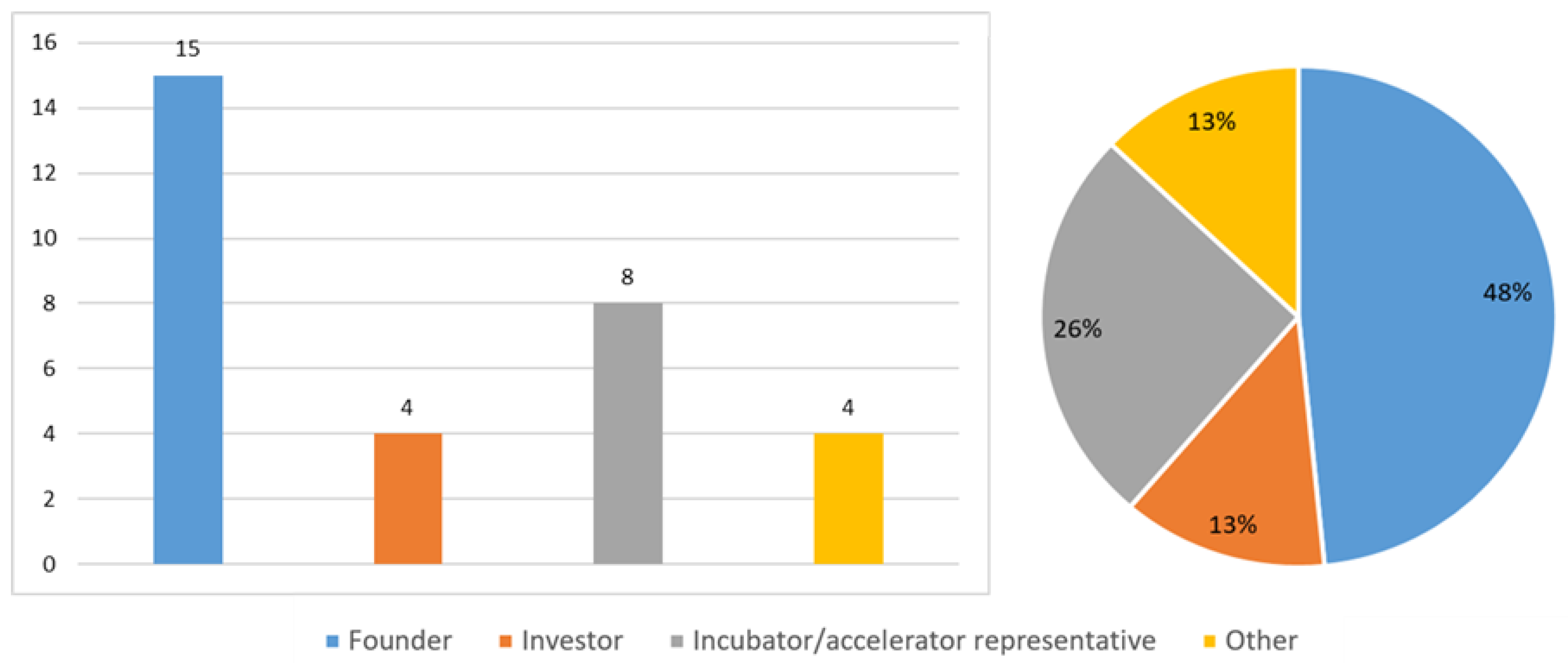



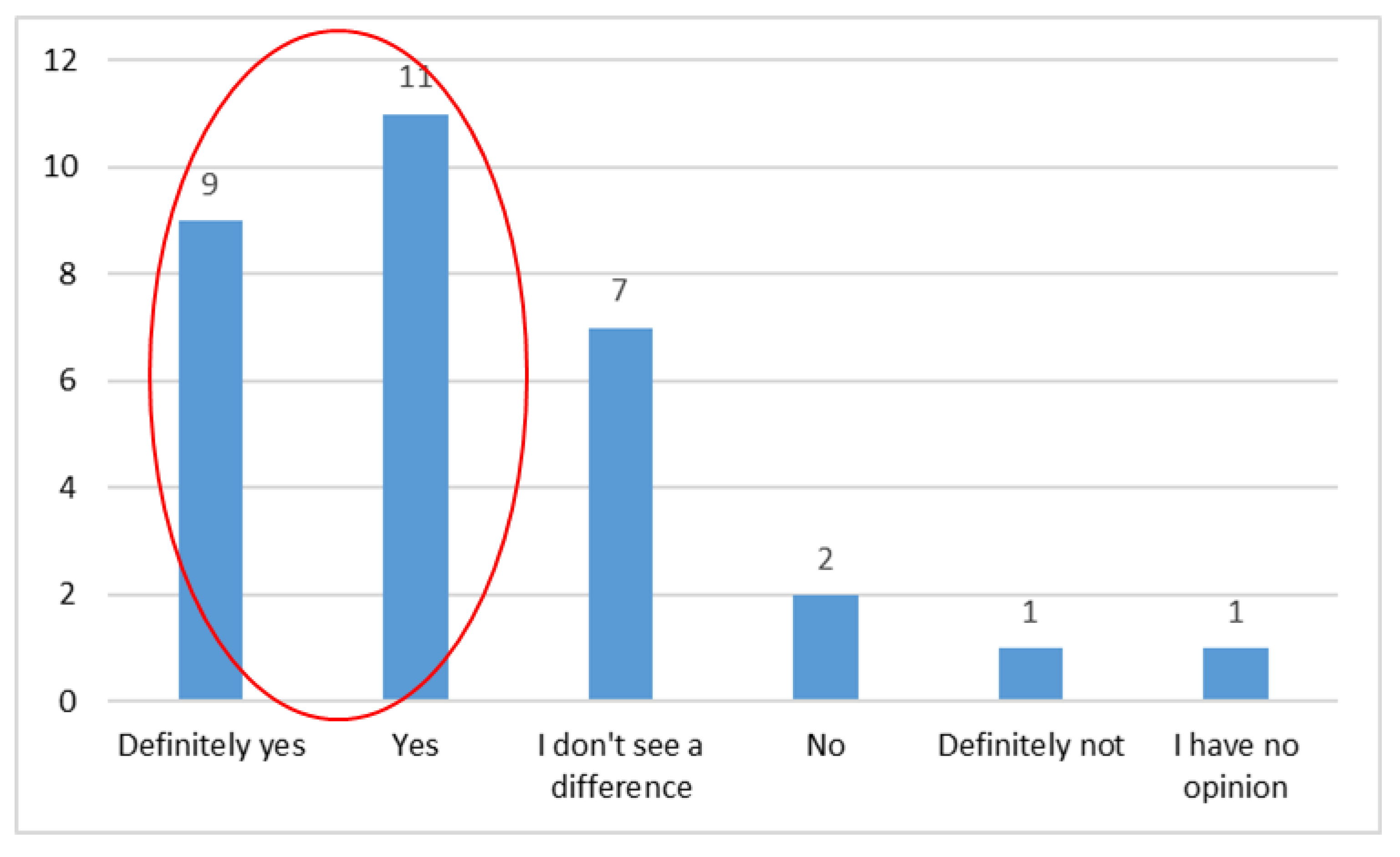


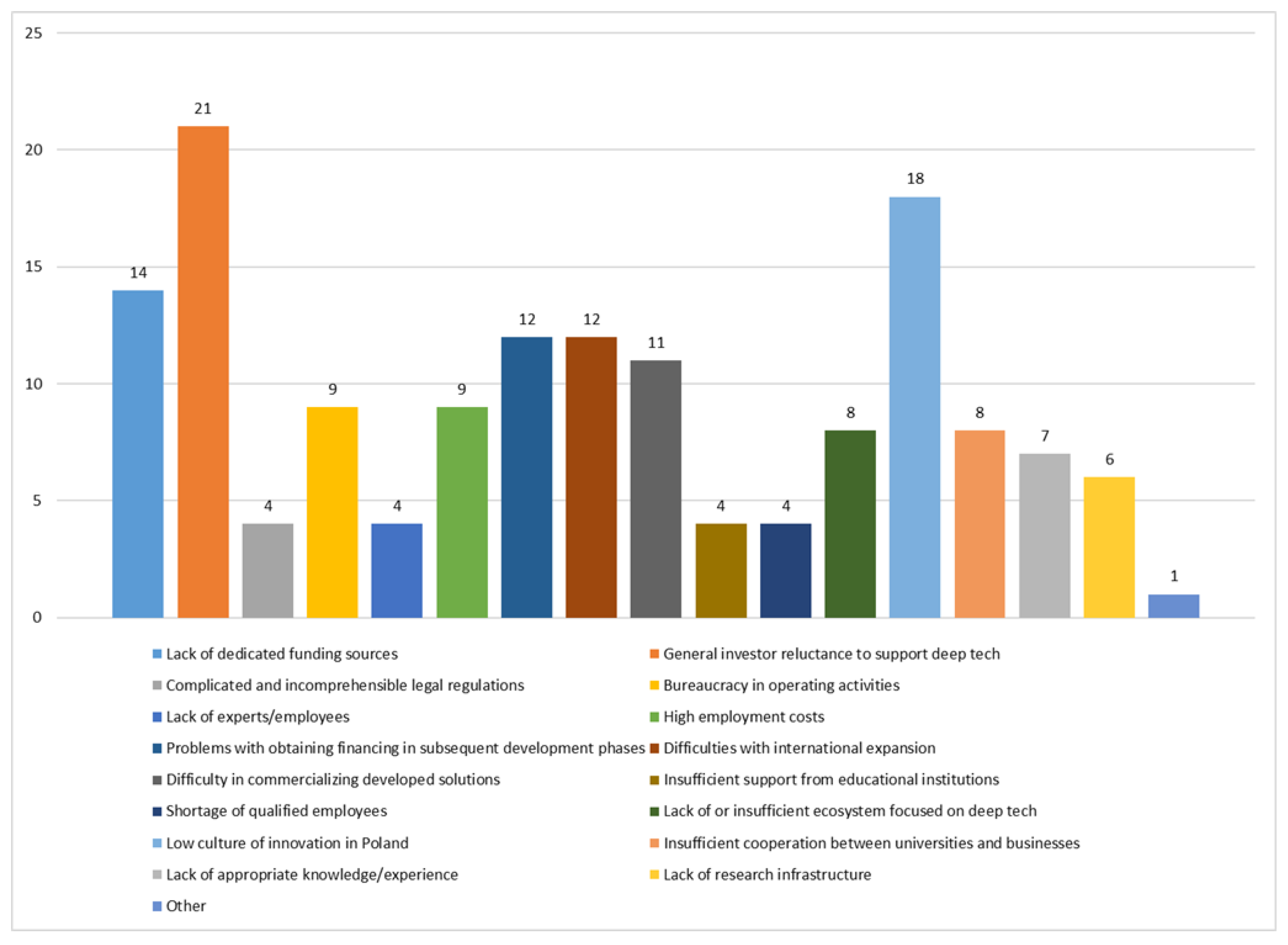
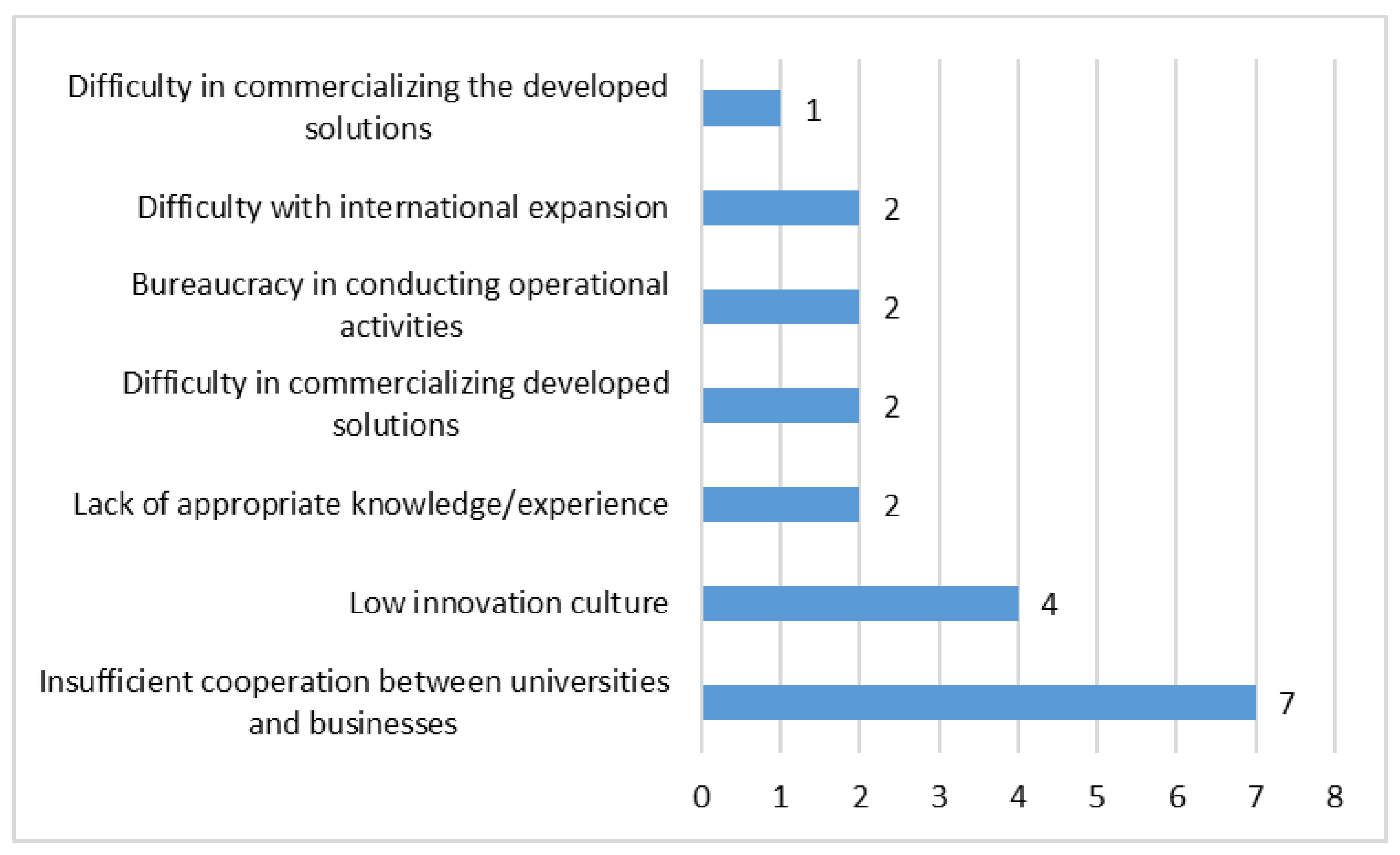




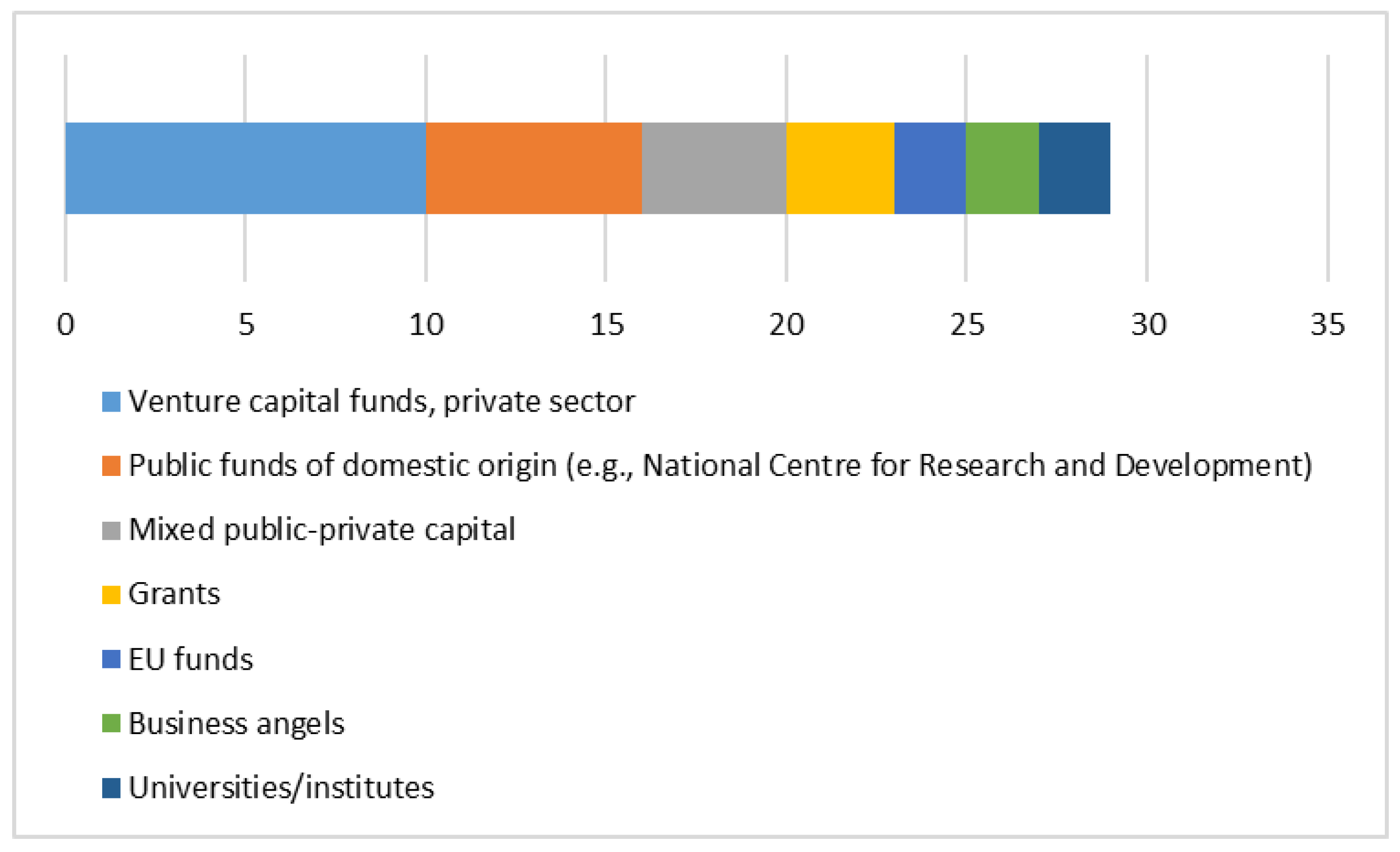



| Analyzed Period | 1960s | Turn of the 1970s and 1980s | Turn of the 20th and 21st Centuries | 2010s and 2020s of the 21st Century |
|---|---|---|---|---|
| Strategic research and development directions | Defense industry, military and communications technologies, nuclear energy, space technologies | Digital technologies, computers and microelectronics, and biotechnology | Development of telecommunications—making the Internet available for civilian use | Artificial intelligence models, machine learning, development of the following fields: medtech, fintech, climate change mitigation, digitalization |
| Deep Tech As | Characteristics |
|---|---|
| science-based innovation | Innovation based on:
|
| technology start-ups | Young, innovative companies or projects that take on the challenge of introducing new products, services, or solutions to the market (or bringing them closer to the market). These products and services are based on unique, proprietary technologies derived from advanced scientific and engineering research. |
| economic sector, ecosystem | A specific part of the market or industry (similar to fintech, medtech, biotech) encompassing specific technology sectors and their key players, such as:
|
| business model, innovation model | A distinctive value creation model based on:
|
| political term | It identifies technologies of strategic importance, crucial to the independence and security of the state and region. It serves as a basis for the creation of strategic programs, grants, and dedicated funds, for example, in the EU (Horizon Europe, European Innovation Council), the USA (CHIPS and Science Act), and China (Made in China 2025 strategy). |
| Characteristics | High Tech Innovation | Deep Tech Innovation |
|---|---|---|
| Source of technology | Based on the application or incremental improvement of existing advanced technologies. High-tech industries typically leverage established scientific knowledge and apply it to create more efficient or commercially attractive products. | Rooted in fundamental scientific discoveries or engineering breakthroughs that enable entirely new technological paradigms or markets. Deep-tech innovations often emerge from basic research and require the convergence of multiple disciplines. |
| Development and Maturity Cycle | Characterized by shorter R&D and market adoption cycles. High-tech products can often be developed and commercialized within existing industrial infrastructures and supply chains. | Involves long development timelines and higher technological uncertainty. The maturation of a deep-tech innovation typically requires several years (or decades) of experimentation, prototyping, and validation before commercial viability is achieved. |
| Financial Requirements | Requires substantial investment in skilled labor and product development, yet the path to revenue generation is typically faster and more predictable. | Entails very high initial capital expenditure due to laboratory research, hardware prototyping, and infrastructure. The return on investment is highly uncertain and long-term. |
| Technological and Market Risk | Dominated by market risk (competition, consumer acceptance, market timing), while technological feasibility is generally established. | Characterized by high technological and market risk, as both the feasibility and demand for the innovation may be uncertain at the early stages. |
| Strategic and Societal Impact | Generates significant economic and technological progress, but tends to be evolutionary, improving existing markets and systems. | Aims to achieve transformational or systemic impact, addressing “grand challenges” such as climate change, health, and sustainable resource management; often creates entirely new industries. |
| Type of Product or Service | Frequently focused on software-driven, ICT, or digital solutions, as well as improvements in existing hardware or processes. | Oriented toward fundamental sciences, technologies—such as advanced materials, energy devices, photonics, quantum computing, robotics, artificial intelligence, machine learning, or biotechnologies |
| Commercialization and Barriers to Entry | Commercialization pathways are well established, with moderate entry barriers due to accessible technology and lower regulatory constraints. | Commercialization is complex, with high entry barriers linked to intellectual property protection, long testing cycles, infrastructure needs, and regulatory compliance. |
Disclaimer/Publisher’s Note: The statements, opinions and data contained in all publications are solely those of the individual author(s) and contributor(s) and not of MDPI and/or the editor(s). MDPI and/or the editor(s) disclaim responsibility for any injury to people or property resulting from any ideas, methods, instructions or products referred to in the content. |
© 2025 by the authors. Licensee MDPI, Basel, Switzerland. This article is an open access article distributed under the terms and conditions of the Creative Commons Attribution (CC BY) license (https://creativecommons.org/licenses/by/4.0/).
Share and Cite
Kowal, D.; Przewoźnik, W. Deep Tech Ecosystems as Drivers of Sustainable Development: Entrepreneurship and Innovation Perspectives from Europe and Poland. Sustainability 2025, 17, 10195. https://doi.org/10.3390/su172210195
Kowal D, Przewoźnik W. Deep Tech Ecosystems as Drivers of Sustainable Development: Entrepreneurship and Innovation Perspectives from Europe and Poland. Sustainability. 2025; 17(22):10195. https://doi.org/10.3390/su172210195
Chicago/Turabian StyleKowal, Dominik, and Wojciech Przewoźnik. 2025. "Deep Tech Ecosystems as Drivers of Sustainable Development: Entrepreneurship and Innovation Perspectives from Europe and Poland" Sustainability 17, no. 22: 10195. https://doi.org/10.3390/su172210195
APA StyleKowal, D., & Przewoźnik, W. (2025). Deep Tech Ecosystems as Drivers of Sustainable Development: Entrepreneurship and Innovation Perspectives from Europe and Poland. Sustainability, 17(22), 10195. https://doi.org/10.3390/su172210195






